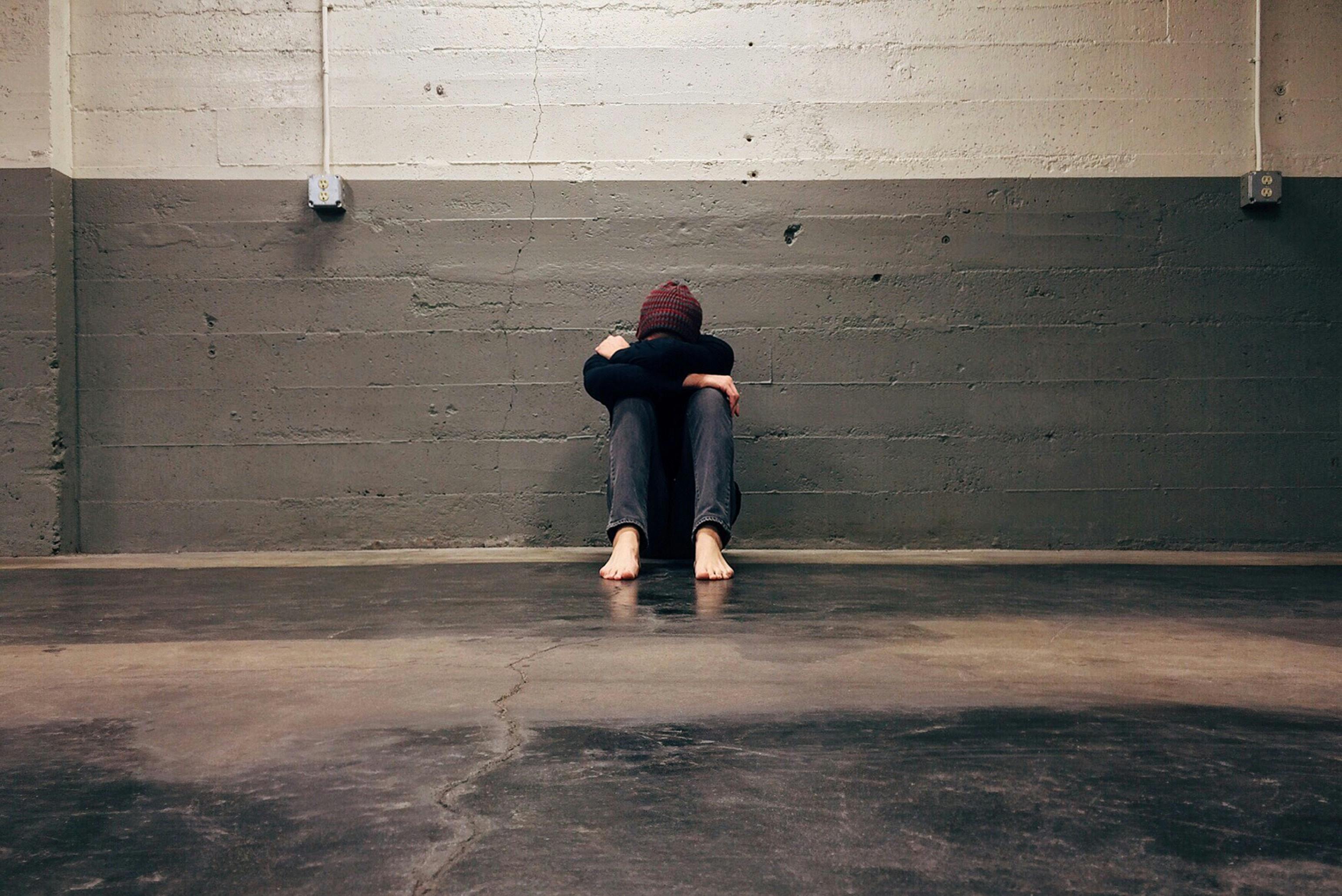Anhedonia Explained: Causes, Symptoms & Paths to Recovery

Imagine a world where the things you once loved - the laughter of friends, the rush of a morning jog, the taste of your favorite meal - no longer bring joy or meaning. This condition, known clinically as anhedonia, represents the inability to experience pleasure. It is a key symptom associated with depression and is found frequently in individuals working to be sober from certain addictive substances or behaviors (e.g. gambling, masturbation). In this blog, we will delve into the behavioral and clinical perspectives of anhedonia, its role in addiction recovery and depression, and actionable strategies to navigate its challenges.
What Is Anhedonia?
Anhedonia is derived from the Greek words "an-" (without) and "hedone" (pleasure). Clinically, it refers to a marked reduction or complete loss of the capacity to derive pleasure from activities that are typically rewarding. Anhedonia is not simply "feeling down" or "bored." It goes deeper than that, impacting one's psychological, emotional, and even physical well-being.
Given that anhedonia is commonly seen in individuals with depression and those recovering from substance use disorders, anhedonia can be caused by a variety of factors. And, the interplay between these conditions makes understanding the source of anhedonia critical in mental health treatment. Anhedonia can be severe, resulting in a level of numbness and disconnect that causes someone to not want to live anymore. Or, anhedonia can be a more mild constant state of grey that causes people to simply shrug and be apathetic when introduced to something that would be typically exciting to the average person, like a free trip to Disneyland.
Anhedonia in Sobriety
For those battling substance abuse, anhedonia can be a central challenge in recovery. Substance abuse or addictive behaviors alters the brain's reward system by flooding the brain with excess neurotransmitters like dopamine, which are responsible for feelings of reward and pleasure. This creates such an intense high that it hijacks the brain’s natural mechanisms for pleasure. Over time, this repeated flooding of chemicals dampens the brain's ability to produce dopamine naturally, leaving individuals reliant on external stimuli for joy. Sobriety, then, can bring about a withdrawal not only from the substance or behavior itself but also from the perceived capacity to feel happiness.
This "pleasure deficit" syndrome can be profoundly demotivating, leading to feelings of hopelessness and an increased risk of relapse. The inability to derive pleasure from ordinary activities may leave the recovering individual questioning the very purpose of their efforts to stay sober.
Anhedonia and Depression: A Double-Edged Sword
Anhedonia is one of the hallmark symptoms of depression, described in the DSM-5 (Diagnostic and Statistical Manual of Mental Disorders) as a loss of interest or pleasure in most activities. Depression and anhedonia often coexist, creating a cyclical relationship where one reinforces the other.
One of the theories behind the presence of depression is a dysregulation in neural pathways, including those related to reward processing. Brain imaging studies suggest that the prefrontal cortex and limbic system—regions involved in motivation and pleasure—are less active in individuals with depression. Additionally, chronic stress can damage the brain's reward circuitry, making it difficult to experience pleasure even when external conditions improve.
Anhedonia can make depression feel insurmountable as it robs individuals of the small joys that could otherwise serve as stepping stones toward recovery.
Anhedonia: Behavioral Impacts and Everyday Challenges
The real-world implications of anhedonia are vast, especially for individuals managing sobriety or depression. These challenges may include:
- Difficulty in Social Relationships: Disconnection can lead to isolation and avoidance, compounding feelings of loneliness and despair.
- Impaired Motivation: A reduced drive to engage in activities creates a sense of “stuckness” that further triggers depressive symptoms.
- Risk of Relapse: For individuals in recovery, the persistent absence of pleasure can make the allure of substances (and the pleasure they bring) more tempting.
- Reduced Quality of Life: The inability to enjoy joy is a fundamental experience of life and can lead to existential questioning.
Addressing Anhedonia: Clinical and Behavioral Approaches
Understanding anhedonia is only half the battle; the next step involves developing strategies to manage and overcome it. Both clinical interventions and behavioral techniques play a role in this process.
Clinical Treatment Options
- Therapy: Structured clinical treatment approaches, like Cognitive Behavioral Therapy (CBT), focus on identifying and restructuring thought patterns that contribute to anhedonia. Practices like “behavioral activation” encourage individuals to engage in activities even in the absence of immediate pleasure given the knowledge that the brain can heal over time.
- Medication: Certain medications, like Selective Serotonin Reuptake Inhibitor (SSRI) antidepressants can help restore chemical balance in the brain. Newer treatments like ketamine therapy and transcranial magnetic stimulation (TMS) have shown promise in targeting treatment-resistant anhedonia and/or depression.
- Physical Activity: Exercise promotes the release of healthy endorphins and dopamine, better regulating the brain and offering a natural way to counteract anhedonia.
Behavioral Techniques to Manage Anhedonia
- Behavioral Activation: Engage in activities that you have a history of enjoying, even if they feel unappealing at first. Small actions, like taking a walk or listening to music, can gradually rebuild pathways for pleasure.
- Practice Gratitude Journaling: Each day, list three things you’re grateful for. This rewires your brain to notice the positive aspects of life.
- Mindfulness: Practicing mindfulness can help individuals reconnect with their bodies and surroundings, reducing the mental fog associated with anhedonia. Focus fully on small, pleasurable experiences, like eating a meal, to engage all your senses—smell, texture, taste—and be present in the moment.
- Branching Out: Introduce new experiences into your life to stimulate your brain. This could be exploring a new hobby, visiting unfamiliar places, or learning a new skill.
- Social Connection: Share your struggles with trusted friends, family, or a support group. Social connection can help counteract isolation and reignite emotional engagement and resilience.
- Create Joy “Rituals”: Establish daily or weekly rituals designed to nurture small joys—such as lighting a scented candle, watering plants, or watching a favorite movie with a loved one.
- Routine Setting: Being intentional about developing a daily schedule can also give a sense of purpose and minimize decision fatigue.
- Volunteer Work: Helping others can shift focus from a preoccupation with personal struggles and can foster feelings of purpose and connection.
- Mind-Body Connection: Activities like yoga, tai chi, or even deep breathing exercises can help bridge the gap between physical and emotional well-being.
- Creative Expression: Experiment with artistic activities like drawing, cooking, writing poetry, or photography to help rekindle lost passions and create new pathways for pleasure. Creative outlets can help rekindle feelings of purpose and achievement and create new pathways for pleasure.
- Structured Outdoor Time: Spend time in nature, whether it’s taking a short hike, sitting by a lake, or walking in a park. Fresh air and natural surroundings have proven mental health benefits.
- Small Wins: Start with manageable goals that provide a sense of accomplishment, such as cooking a meal or completing a puzzle.
- Self-Compassion Practices: Speak kindly to yourself, especially during challenging moments. This can make a significant difference in how you approach recovery and healing.
- Track Your Mood and Activities: Keep a log of your daily activities and emotional responses. Over time, this can help you identify patterns and find what sparks even subtle enjoyment.
FAQ: Common Questions About Anhedonia
1. What is the difference between anhedonia and depression?
While anhedonia is a symptom of depression, not all individuals with depression experience anhedonia. Conversely, some people may experience anhedonia due to other conditions, such as substance withdrawal or chronic stress, even if they do not meet the full clinical criteria to be formally diagnosed with Depression.
2. Can anhedonia go away on its own?
Recovery from anhedonia is possible, but it often requires time and active intervention. Behavioral strategies, therapy, and sometimes medication can support the process. Left unaddressed, anhedonia can persist or worsen.
3. Is anhedonia a permanent condition?
Not necessarily. The brain has remarkable plasticity, meaning it can adapt and heal over time. With the right strategies, many individuals regain their ability to experience pleasure.
4. Why does anhedonia occur for those abusing substances?
Substance abuse disrupts the brain’s reward system, creating a dependence on external stimuli for pleasure. Once sober, the brain requires time to adjust and restore its natural reward pathways, which can lead to temporary anhedonia.
5. How long does anhedonia last during recovery?
The duration varies depending on factors like the severity of substance use, co-occurring mental health conditions, and individual circumstances. For some, it may last weeks or months. For others, it could take longer to fully recover.
6. Can exercise really help with anhedonia?
Yes. Physical activity stimulates the release of endorphins and dopamine, which are essential neurotransmitters in experiencing pleasure. Even moderate exercise, like a daily walk, can make a significant difference in recalibrating your brain’s pleasure pathways.
7. Should I seek professional help for anhedonia?
If anhedonia significantly impacts your quality of life or coexists with other mental health challenges, such as depression or anxiety, professional help would be a good idea. Therapists, psychiatrists, and support groups can provide tailored guidance and support. Check out our list of trusted providers here to see if you can find the perfect fit for you.
8. Is medication always necessary to treat anhedonia?
Just like any other condition, medication isn’t always required. But, medication can be highly effective for some individuals with anhedonia to help their symptoms lessen enough to gain momentum and hope doing things that bring them joy. Whether medication is right or effective for you depends on the underlying cause and severity of the condition. Consult with your healthcare professional to explore your options.
9. Can diet influence anhedonia?
A diet rich in nutrients that support brain health - such as omega-3 fatty acids, antioxidants, and vitamins - is never going to make things worse and is always a valuable component of holistic treatment for mental health.
10. How can loved ones help someone with anhedonia?
Being patient, educating themselves about the condition, offering emotional support, and encouraging small steps toward re-engagement in life can make a meaningful impact to those suffering with anhedonia. Avoid minimizing the person’s experience and consider suggesting professional help when appropriate.
The Role of Time and Hope
Anhedonia, whether stemming from depression or the journey to sobriety, can feel overwhelming. But, anhedonia does not have to be a permanent condition. By combining clinical treatments with behavioral strategies, individuals can gradually reclaim their capacity for joy. Recovery requires effort and patience. However, each small step forward is a victory worth celebrating! Hope is a crucial counterbalance to the despair of anhedonia.
Conclusion: From Emptiness to Fulfillment
Anhedonia can be a complex and deeply challenging condition that impacts many individuals. Yet, understanding its mechanisms and effects provides a foundation for hope and recovery. Sobriety and depression are transformative journeys. As difficult as anhedonia may be, it does not define these journeys; rather, it serves as a reminder of the strength required to overcome life's greatest obstacles.




